Lenovo Legion Duel review: The coolest gaming smartphone on the market
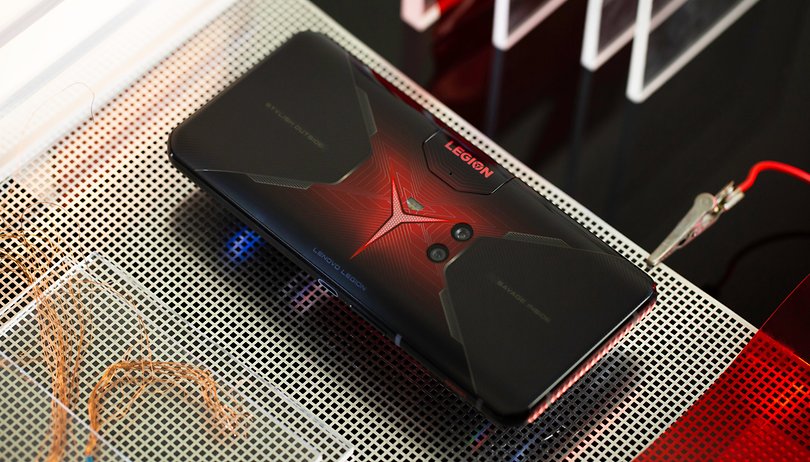

The Lenovo Legion Duel is the first gaming smartphone from the Chinese manufacturer, and boy is it impressive at first glance! Armed with a Snapdragon 865+ chipset, 16 GB of LPDDR5 RAM, a 144 Hz AMOLED screen, a dual 5,000 mAh battery, you know that this is a direct competitor to the Asus ROG Phone 3 as it focuses purely on gaming and nothing else.
Good
- AMOLED FHD+ 144 Hz display
- 5,000 mAh battery
- 90-watt fast charging supported
- Powerful Snapdragon 865+ chipset
- Temperature regulation
- Pop-up selfie camera
Bad
- Limited streaming mode
- Boring design
- Rear camera module less than impressive
- Poor software support
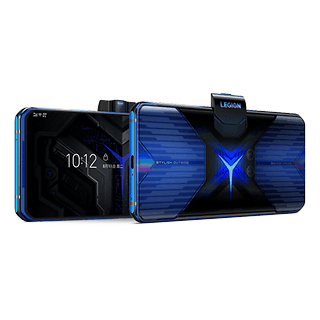
Who is the Lenovo Legion Duel for?
The Lenovo Legion Duel was made available for purchase in France from October 15, 2020, with an asking price of €899.99 for the 12GB/256GB version. Those who would want the top-of-the-line model will have to fork out €999.99 for the 16GB/512GB configuration.
Armed with a Snapdragon 865+ chipset, a 144 Hz AMOLED display, a generous 5,000 mAh battery, 90-watt fast charging capability, the Lenovo Legion Duel is the designed for mobile gamers. It does not shy itself from being touted as a direct competitor to the Asus ROG Phone 3 which in my opinion, still remains the best gaming smartphone on the market today.
Compared to its primary competitor, the Asus ROG Phone 3, its 5,000 mAh battery is smaller (you will find a 6,000 mAh behemoth in the ROG Phone 3), but it does recharge a whole lot faster courtesy of the fast charging capability at 90-watts.
Its camera module is slightly less impressive, although there is the pop-up selfie camera in front that does offer flexibility in photo-taking while moving away from a notch or punch-hole camera design. Overall, the smartphone's design is not the most discreet but then again, it is unashamed about its gaming pedigree. The screen is slightly less responsive with a touch-sampling rate of 240 Hz, which is just a shade less than the ROG Phone 3's 270 Hz.
The smartphone fully embraces its gaming heritage, make no mistake about it. Do not expect even the slightest compromise just so it can cater to being more versatile and used as a daily driver at the office. No, the Lenovo Legion Duel was specially designed for gaming and nothing else. While that might be true, I think I could be perfectly happy with this (for now).
Specially designed for gaming
The design of the Lenovo Legion Duel is anything but mundane. Forget about matte backs made out of plastic, forgive me for my faux pas, I meant polycarbonate, tapered curves, and curved displays. As etched on its holographic glass back, it proudly touts the Lenovo Legion Duel to be "stylish on the outside, wild on the inside."
The Lenovo Legion Duel is a large, angular brick complete with RGB LEDs. At the back lies the glaringly obvious "Y" logo to signify Lenovo's gaming range, which has been renamed "Legion". This "Y" logo will light up in different colors and even sport customizable animation patterns.
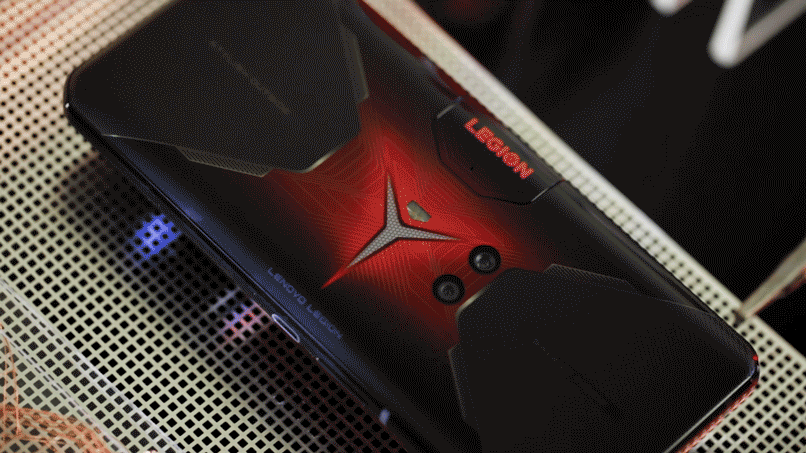
There is nothing at the back that protrudes in an unruly manner, and the double camera module remains recessed. There are hints of subtle notches at both ends of the back to ensure optimal support each time you hold the smartphone in your palms - and these notches come in handy to provide extra grip, especially when your palms are sweaty. In fact, the entire design clearly shows that this handset is meant to be used in landscape mode, making it the perfect orientation for gaming.
Volume rockers are located on the left side and not on the right, which is the right move since it would go a long way in preventing any interference with Bluetooth controller clips. There is the USB-C port located at the bottom segment, while Lenovo has cleverly placed another similar input in the centre of the left-hand side.

This choice is necessary for the double-quick charge feature to work, but it was also designed so that it does not interfere with your right hand when you hold the smartphone horizontally to play while charging your smartphone.
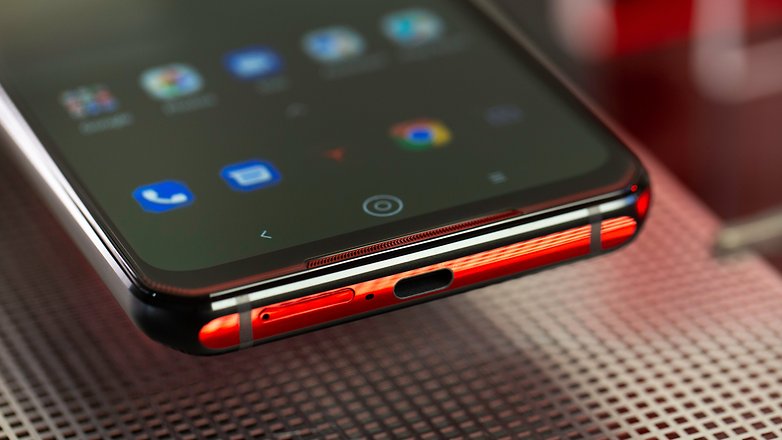
Even the selfie camera remains carefully hidden in a pop-up module, and is located on the right-hand side. It pops out once the smartphone is held horizontally, similar to a webcam above a gaming PC's monitor. In addition, this pop-up selfie camera also carries the lock button - a rather strange design in my opinion.
No doubt that the Lenovo Legion Duel is a heavy handset, tipping the scales at 239 grams. It is also a wee bit thicker (9.9 mm) compared to other handsets. However, you would have realized by now that this is not a smartphone that was designed to be a compact model or one that carries a practical form factor. The goal is to optimize one's grip for gaming purposes. On this point alone, I find the design of the Lenovo Legion Duel to be a whole lot more sensible and relevant compared to the Asus ROG Phone 3 or the RedMagic 5S.
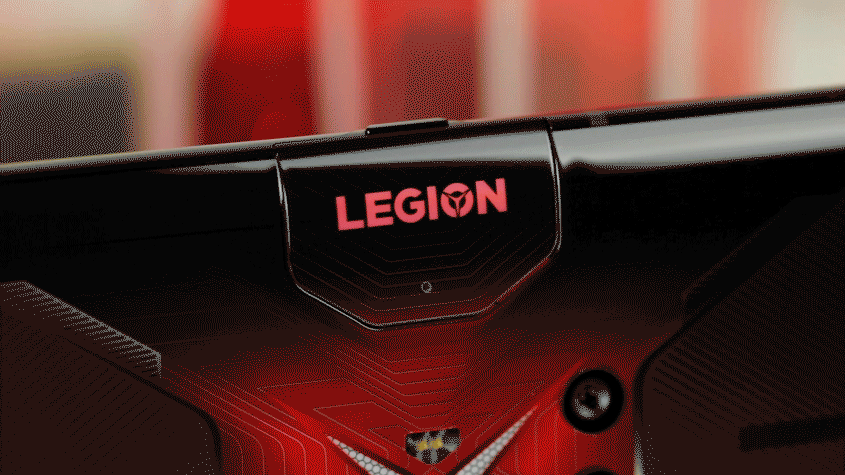
144 Hz AMOLED FHD+ display is extremely smooth
The Lenovo Legion Phone Duel features a 6.65-inch AMOLED FHD+ display with a 19.5:9 aspect ratio and a refresh rate of up to 144 Hz. The display is flat and not curved, going against conventional wisdom, while retaining a prominent chin and forehead that thankfully does not stand out so that it can accommodate the stereo speakers.
As is often the case, the high refresh rate implies compromises - and with the Legion Phone Duel, this means doing away with a 1440p display for a 1080p display. Frankly, this hardly matters for a display that small, especially when you're playing games and your eyes will not be able to appreciate the slightly more detail. It is also not in the best interest of all smartphone manufacturers to bow to Samsung's WQHD+ offering at 120 Hz, such as on the Samsung Galaxy S21 Ultra.
Despite the slightly lesser screen resolution, we still maintain our view that this is an excellent display with a maximum brightness of 620 nits. I did not run into any problems of reflection or colorimetry, and strangely enough, I happen to be one of the rare users who prefer to have a smooth display instead of the highest possible resolution. Hz FTW as opposed to DPI!
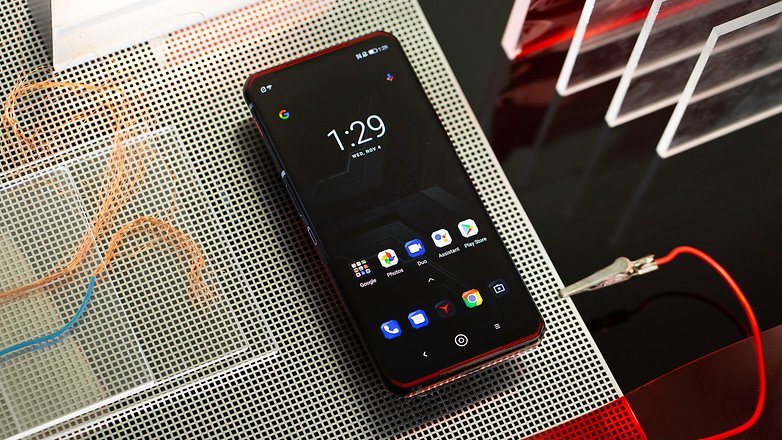
One can obviously debate the usefulness of having a 144 Hz refresh rate on any other gaming device apart from a PC. Even more so on smartphones, where only a handful of mobile games are compatible with such a high refresh rate, and these are few and rare to come across in the first place.
For instance, you'll be stuck at 60 FPS on Call of Duty Mobile or Fortnite. I do doubt that Lenovo, a big name in the world of gaming, is less capable than OnePlus or even Sony (who has negotiated to obtain an exclusive 120 FPS on Call of Duty Mobile on its latest Xperia) to work with game publishers/developers in order to exploit its hardware to its full potential in the future.
This is one of the major hurdles when it comes to mobile gaming, but it also happens to be one of its most promising paths. Nevertheless, we still benefit from one of the smoothest gaming experiences available on the market right now - at least visually. Even if it will be difficult to silence the critics of high refresh rates, one can actually perceive the smoothness beyond a 60 Hz refresh rate, even on a game that is capped at 60 FPS.
I could go into a 5,000-word article on input lag, and I might do so if you're interested, but 144 Hz is more than a welcome feature on the Lenovo Legion Duel.
The ZUI interface is not intuitive
I've been using this Lenovo device for several months already, and at the time I'm writing this review (January 2021), the Lenovo Legion Duel runs on the ZUI skin that is based on Android 10. The smartphone remains stuck on the August 2020 security patch, which is terrible in terms of software updates. In fact, this smartphone is not even listed on Lenovo's Android update roadmap. What a shame!
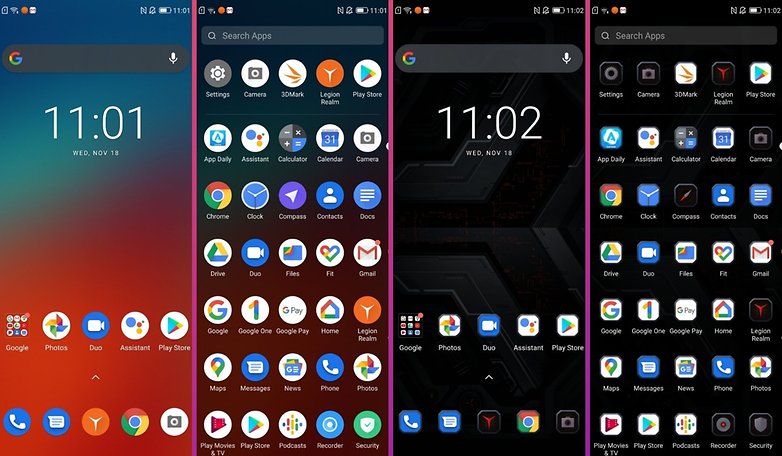
The interface is visually close to stock Android, although you can opt for a more aggressive gaming look. You can also access additional customization settings such as changing the LED color at the back of the smartphone or the Always on Display (AOD) setting.
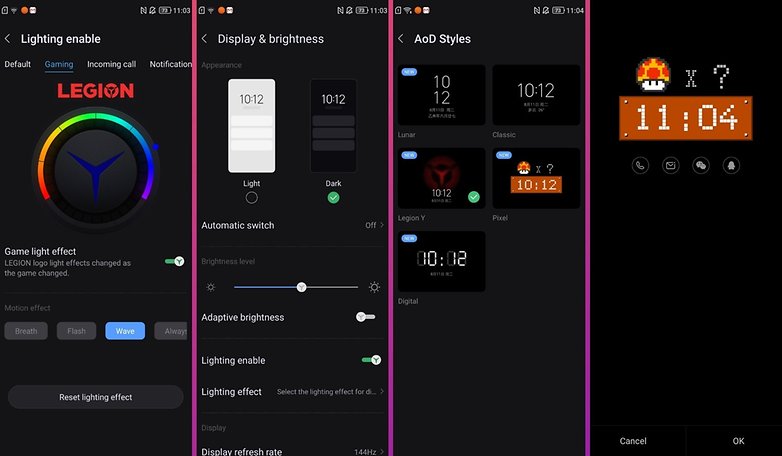
What is the most interesting would be the Legion Realm menu, which enables you to manage all of the performance parameters and settings related to different gaming modes.
This menu provides you with access to selected indicators, including reception quality, chip clock frequencies, screen brightness, refresh rate, and internal temperature. You can also activate the recording function and streaming mode here.
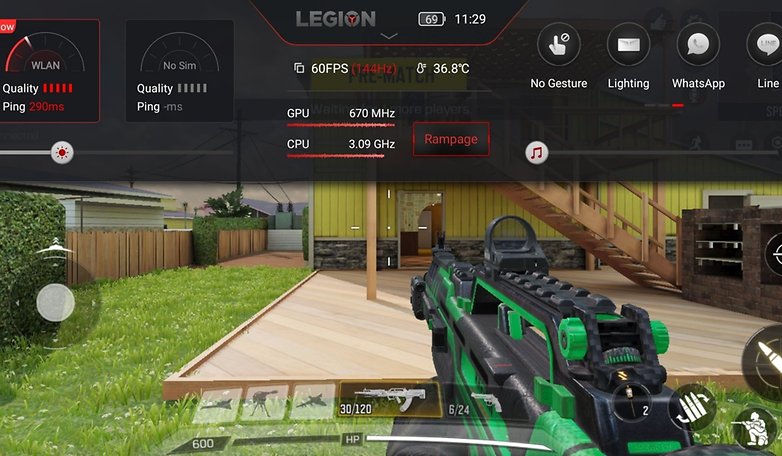
However, I think that it is a shame the stream mode doesn't automatically begin recording when you play. It doesn't launch a real stream either, but rather, automatically redirects you to your Twitch or YouTube Gaming page.
Hence, you'll need a third party capture and streaming software (OBS style) to broadcast the content displayed on your Lenovo Legion Duel. The stream mode is a simple "layout" shortcut that enables you to have the interface of a stream without performing any editing.
There is another bug that ticks me off - the screenshot function is only accessible via the Legion Realm menu that must be scrolled in the manner of a notification pane. The problem is this: when you press the screenshot button, the menu pane remains on the screen and therefore, ruins the entire screenshot.
So I found myself taking manual capture screenshots by pressing the volume button (located at the bottom) and the lock button, which is located on the pop-up selfie camera. Doing so sees the pop-up camera retract under the pressure of my finger. The stream mode is really interesting and carries plenty of potential, but it is clearly not intuitive enough to be used.
A powerful monster with the Snapdragon 865+ chipset
The Lenovo Legion Phone Duel is equipped with Qualcomm's most powerful chip in 2020, the Snapdragon 865 Plus SoC. This is an overclocked version of the Snapdragon 865, which happened to see action in most of last year's flagship devices. The Snapdragon 865 Plus comes with an overclocked Qualcomm Kryo 585 Prime processor of up to 3.1 GHz, which is a 10 percent increase over the base Snapdragon 865.
The Qualcomm Adreno 650 GPU offers 10 percent more graphics rendering capability in addition to Qualcomm FastConnect 6900 compatibility that is expected to deliver Wi-Fi 6 speeds of up to 3.6 Gbps. I decided to compare the Lenovo Legion Duel to the performance of the Kirin 9000 that powers the Huawei Mate 40 Pro, the Snapdragon 865+ in the Asus ROG Phone 3, and the Exynos 2100 in the Samsung Galaxy S21 Ultra.
In order to do so, I launched different graphics benchmarks by activating the performance/gaming mode on each smartphone. For each benchmark, I performed each test 3 times by spacing them several minutes apart so that these handsets have adequate time to cool down and deliver the best possible performance.
The scores you see in the table below are the highest scores obtained among the 3 sessions of each test.
Lenovo Legion Duel
| Benchmarks | Lenovo Legion Duel | Samsung Galaxy S21 Ultra | Asus ROG Phone 3 | Huawei Mate 40 Pro |
|---|---|---|---|---|
| 3D Mark Sling Shot Extreme ES 3.1 | 7773 | 7373 | 7724 | 8093 |
| 3D Mark Sling Shot Vulkan | 3985 | 5175 | 7079 |
5217 |
| 3D Mark Sling Shot ES 3.0 | 9912 | 7291 | 9833 |
9920 |
| Geekbench 5 (Single / Multi) | 978 / 3350 | 942 / 3407 | 977 / 3324 | Untested |
| PassMark Memory |
29.318 | 31.752 | 28.568 |
Untested |
| PassMark Disc |
102.595 | 81.108 | 124.077 |
Untested |
The Snapdragon 865+ would naturally heat up more compared to the vanilla Snapdragon 865. However, the temperature control, or rather the Lenovo Legion Duel's heat management system, is impressive. In addition to the classic benchmarks that rarely say much, I also subjected the devices to the new Wild Life Stress Tests in 3D Mark.
Basically, these are the 2 tests that simulate intensive gaming use, one taking a minute while the taking 20 minutes. Over a short 1 minute session, for example, the Lenovo Legion Duel is naturally less powerful than the Samsung Galaxy S21 Ultra and its SoC Exynos 2100 when it comes to raw performance.
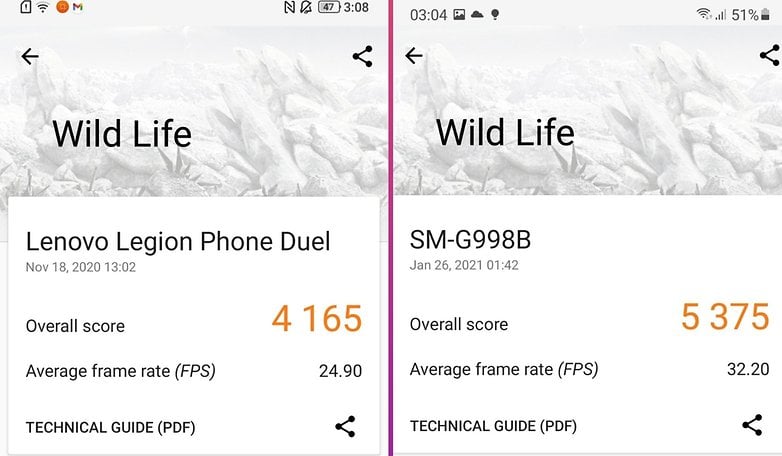
But over an intense 20-minute session, the Lenovo Legion Duel widens the gap with the Samsung Galaxy S21 Ultra. The difference lies in its temperature control and resistance against unnecessary thermal throttling (limiting the performance of a processor to prevent smartphone overheating).
Compare the graphs below. The performance difference between the first test loop (green curve) and the last loop (purple curve) is significantly greater on the Samsung Galaxy S21 Ultra. This reflects a loss of performance as the gaming session progresses.
On the Lenovo Legion Duel, the two curves remain nearly identical, hence performance is more consistent throughout an intense gaming session. However, both smartphones experienced a fairly similar temperature rise.
But we can see very clear performance losses, including framerate drops (FPS) as the temperature rises (red curve, second row in the illustration) and as the battery life decreases (green curve, third row in the illustration).

No doubt we can fully appreciate the importance of having an efficient cooling system. It's really one of the key criteria that distinguishes gaming smartphones from other flagships. Anyone can run games smoothly, but gaming smartphones are able to do so for longer periods of time while minimizing loss in performance.
An average 64 MP camera module except for the selfie camera
No doubt the weakest point of the Lenovo Legion Duel would be the camera module, in particular, the one at the back. This gaming smartphone is equipped with the following camera module:
- a 64 MP wide-angle main lens, f/1.9 aperture, 25mm, 1/1.72", 0.8µm, PDAF
- a 16 MP ultra-wide-angle lens, f/2.2 aperture, FOV 120˚, 16mm
 The dual 64 MP camera module on the Lenovo Legion Duel is clearly not its strong point / © NextPit
The dual 64 MP camera module on the Lenovo Legion Duel is clearly not its strong point / © NextPit
The smartphone's main sensor employs pixel binning to capture 16 MP shots, but you also have the ability to take full 64 MP resolution photos to obtain a better degree of detail.
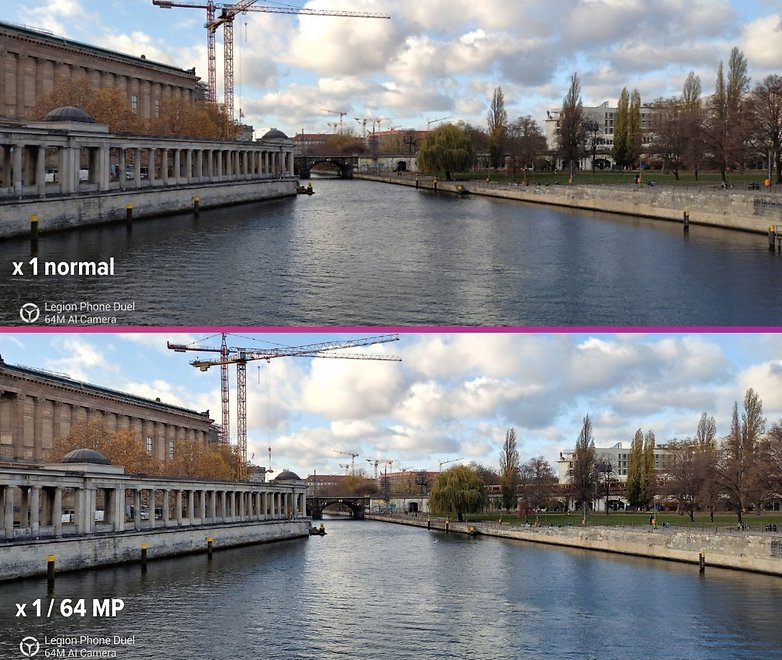
Overall, the Lenovo Legion Duel camera module is remarkably unimpressive for a smartphone in this price range. Yeah, I know we're talking about a gaming smartphone and the camera isn't supposed to be the killer-feature such as those found on the other "classic" flagships.
But still, at almost $1,000 a pop, I think Lenovo could have done better. In daylight, and under good lighting conditions, the main sensor performs rather admirably. Software processing is aggressive and we noticed an oversaturation of colors in the sky, foliage, and grass.
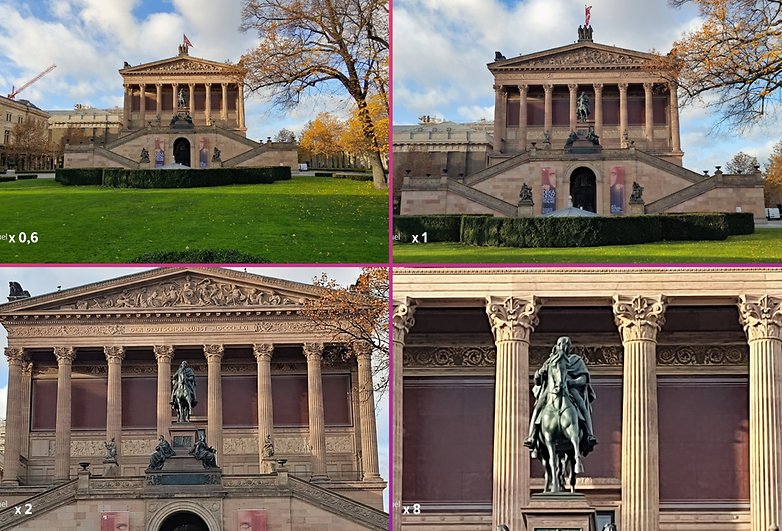
I find that the photos lack sharpness and digital smoothing creates a kind of veil that drowns out the most subtle textures of the shot.
The ultra-wide-angle is clearly not as good in terms of fine detail, but Lenovo manages to offer a rather consistent colorimetry when it comes to wide-angle shots in addition to rather decent exposure management, although the dynamic range is clearly not the main attraction here.
Naturally, one can zoom in up to 8x but will simply have to be satisfied with pure digital magnification. The loss of detail is noticeable but I must admit that the Lenovo Legion Duel manages to perform damage limitation as long as we are satisfied with 2x zoom.
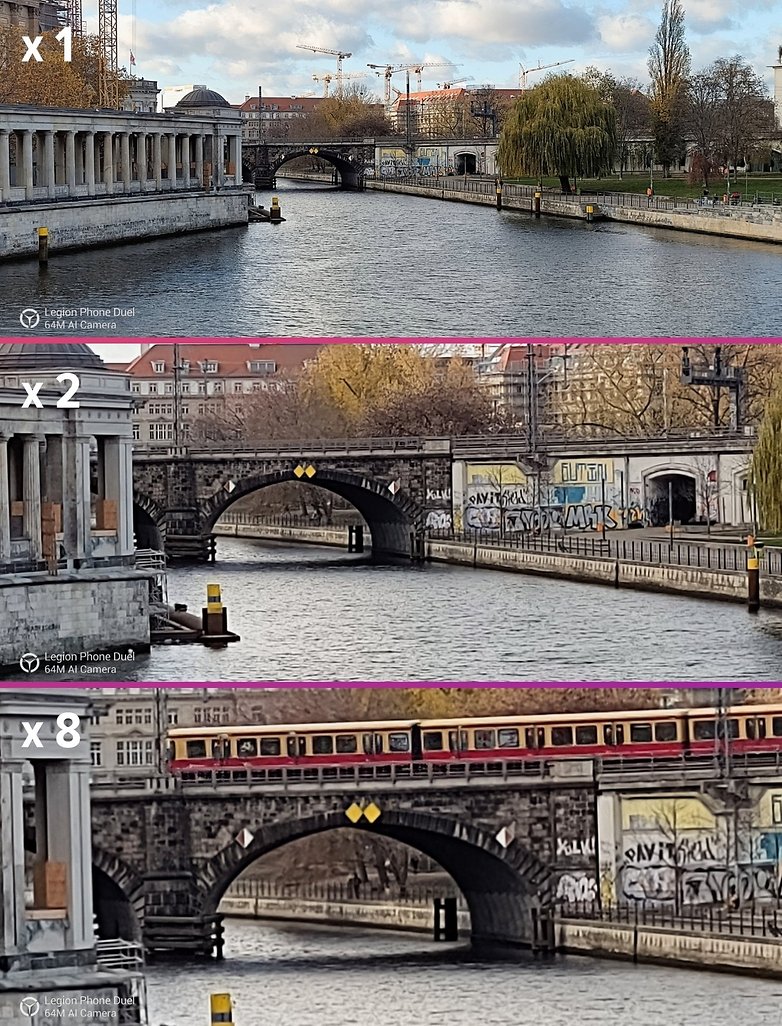
Despite the ultimately pedestrian camera performance, the star of the Lenovo Legion Duel camera module happens to be its "pop-up" selfie camera. This camera is located at the right side, and was designed to stream in "face cam" while you are gaming.
Basically, the idea is to facilitate content creation for streamers or YouTubers who are mobile gaming enthusiasts. This may make even the most hardcore among you laugh, but the smartphone gaming scene is growing with each passing day. In 2020, many eSport tournaments took place on Call of Duty Mobile with prize pools of several million euros.
Last November, Amazon launched its GameOn streaming platform in the United States, which was dedicated entirely to mobile gaming. With this pop-up selfie camera and a selfie + gameplay recording feature on hand, the Lenovo Legion Duel could be a great starter kit for content creators headed in this direction.
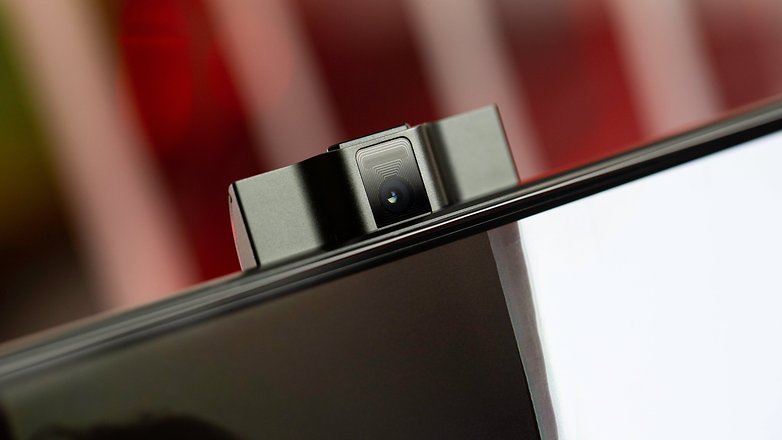
The unique 20 MP wide-angle sensor with an aperture of f/2.2 (25mm equivalent, 1/3.1", 0.9µm) supports HDR and 4K video capture at 30 FPS. This is clearly not the best performing selfie camera available, but I found it to perform decently.
However, the available recording options, ability to create clips retroactively (after a flash of genius in the middle of a multiplayer session), the ability to turn your head away such as seen in old-fashioned Level One shows...all of these really made me appreciate the "Stream Mode" on the Lenovo Legion Duel.
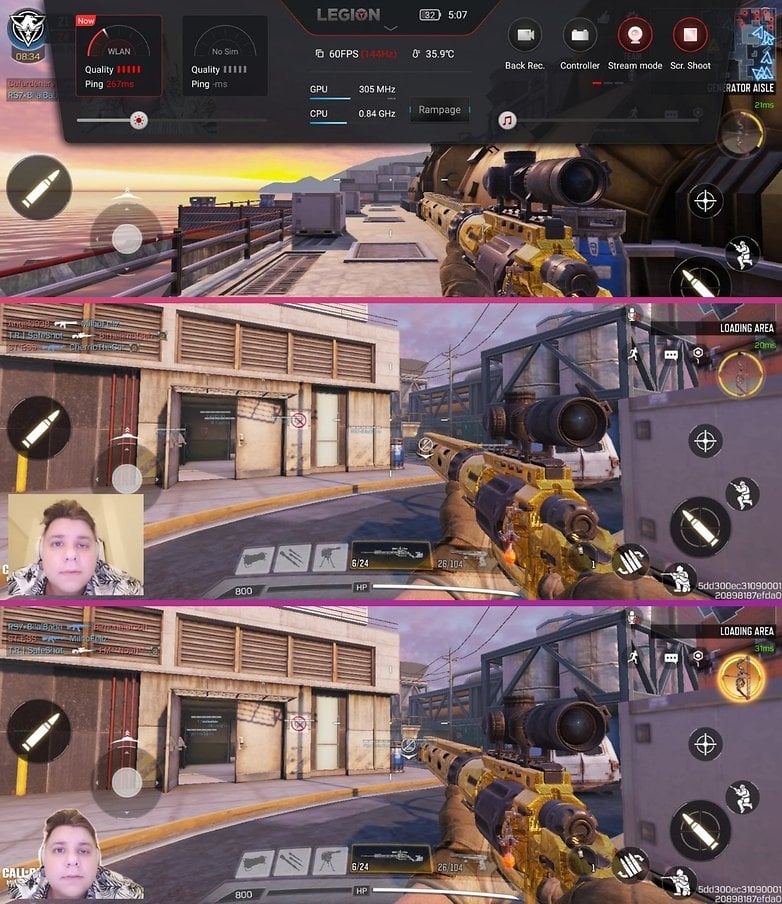
The camera's placement in the center when you hold the smartphone in landscape mode prevents you from obstructing the camera with your fingers, quite unlike the conventional punch-hole or notch setup. The four microphones used for voice recording apply active noise reduction to unwanted noise.
I do know that it I don't make it in tech journalism, I can always get into mobile gaming on YouTube or Twitch.
Solid battery life with a speedy 90-watt charge
The Legion Phone Duel incorporates two 2,500 mAh batteries that can be charged separately. By doing so, it enables the handset to achieve a fast 90-watt charge. You can also use both USB-C connectors for charging simultaneously, now how about that?
There is a USB-C 3.1 port with DisplayPort support on the left side while the other USB-C 2.0 port is located at the lower end. The Lenovo Legion Duel's battery life is excellent. During my many weeks of testing, punctuated by intensive gaming sessions and extended use of up to several hours with the graphics settings pushed to the max, I was always able to last two days without any problem.
The huge charger comes with dual USB-C ports so that you can connect two cables at the same time to charge both batteries in the Lenovo Legion Duel. In most cases, I was able to charge the smartphone from 0 to 100% without having the clock pass the 40-minute mark.
Double charging already exists thanks to manufacturers such as Oppo with their Oppo Find X2 Pro. But Lenovo seems to have pushed the concept further to the extreme by throwing on an additional charging port.
With such a long-lasting battery life and a fast charge, I am ready to forget the absence of wireless charging. Anyway, a gaming smartphone doesn't work well for gaming when you place it on a Qi stand, but you can always continue gaming by having it remain plugged to the power outlet.
Conclusion
The Lenovo Legion Duel is definitely the coolest gaming smartphone on the market. I love the approach of the manufacturer who refuses to make any compromises and doesn't care about seducing a larger, more mainstream and casual audience.
The Lenovo Legion Duel does not lie in no man's land and takes the plunge into a niche known as smartphone gaming - for better or for worse. It is definitely quite a performer, as the smartphone is capable of dishing out impressive gaming performance levels when the situation calls for it.
The solid battery life due to the 5,000 mAh dual battery and the dual 90-watt fast charge (very fast) capability will definitely guarantee long gaming sessions without running into overheating issues or dropped performance.
But Lenovo's clear choice to focus on gaming makes the Lenovo Legion Duel irrelevant for any other users. The design is off-putting for those who prefer discreet and unobtrusive form factors. The camera module is clearly not something that is appealing to shutterbugs. Above all, the form factor is unsuitable for small hands or tiny pockets.
Nevertheless, the price close to €1,000 just to pick up the Lenovo Legion Duel as opposed to a more classic and refined balanced flagship, bears some thinking. This is especially so in terms of raw power, where high-end smartphones equipped with the new Snapdragon 888 or the Exynos 2100 will probably widen the gap in 2021.
Let us not talk about the A14 Bionic chip found in the iPhone 12 that remains ahead of everyone else, according to close to all the benchmarks that exclude Apple's smartphones. This has really forced the gaming aspect of this Lenovo handset to shine. I would advise you to pick it up only if you see your smartphone as a secondary console or even a primary console.
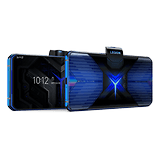




















No mention of speakers, the best feature of this handset.